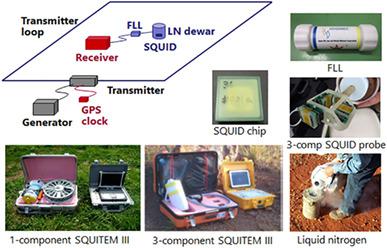最先进的金属勘探地球物理技术
IF 0.8
4区 地球科学
Q3 GEOLOGY
引用次数: 1
摘要
近几十年来,由于未勘查区越来越偏远,金属找矿带不断加深,经济金属矿床的新发现难度逐年加大。因此,金属勘探行业一直渴望采用最先进的地球物理技术,以更高的精度和空间分辨率探测地下深处。作者报道并介绍了基于无人机的磁探、利用Cole-Cole参数的三维时域IP反演算法、利用超导量子干涉装置(SQUID)的时域电磁法以及被动地震勘探等先进的金属地球物理勘探技术。本文章由计算机程序翻译,如有差异,请以英文原文为准。

State‐of‐the‐art geophysics for metal exploration
The new discovery of the economical metal deposit is getting more difficult year by year because the unexplored areas tend to be more remote areas than ever, and the metal prospective zones are deepening in the recent decades. Therefore, the advent of the state‐of‐the‐art or advanced geophysics technology to peer the deeper parts of the ground with higher accuracy and spatial resolution has been aspired in metal exploration industry. The author reports and introduces the drone‐based magnetic survey, the three‐dimensional time‐domain IP inversion algorithm using Cole–Cole parameter, the time domain electromagnetic method using superconducting quantum interference device (SQUID), and passive seismic survey as the state‐of‐the‐art or advanced geophysics technology for metal exploration.
求助全文
通过发布文献求助,成功后即可免费获取论文全文。
去求助
来源期刊

Resource Geology
地学-地质学
CiteScore
2.30
自引率
14.30%
发文量
18
审稿时长
12 months
期刊介绍:
Resource Geology is an international journal focusing on economic geology, geochemistry and environmental geology. Its purpose is to contribute to the promotion of earth sciences related to metallic and non-metallic mineral deposits mainly in Asia, Oceania and the Circum-Pacific region, although other parts of the world are also considered.
Launched in 1998 by the Society for Resource Geology, the journal is published quarterly in English, making it more accessible to the international geological community. The journal publishes high quality papers of interest to those engaged in research and exploration of mineral deposits.
 求助内容:
求助内容: 应助结果提醒方式:
应助结果提醒方式:


